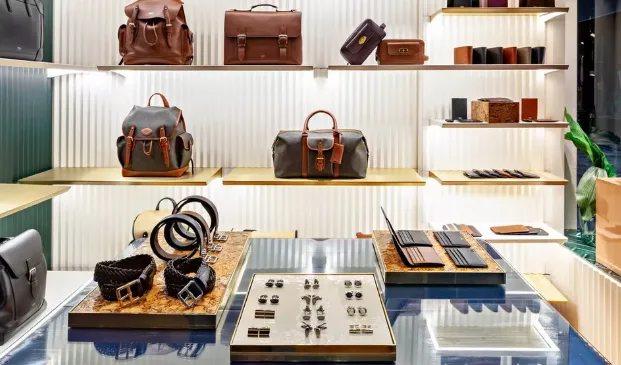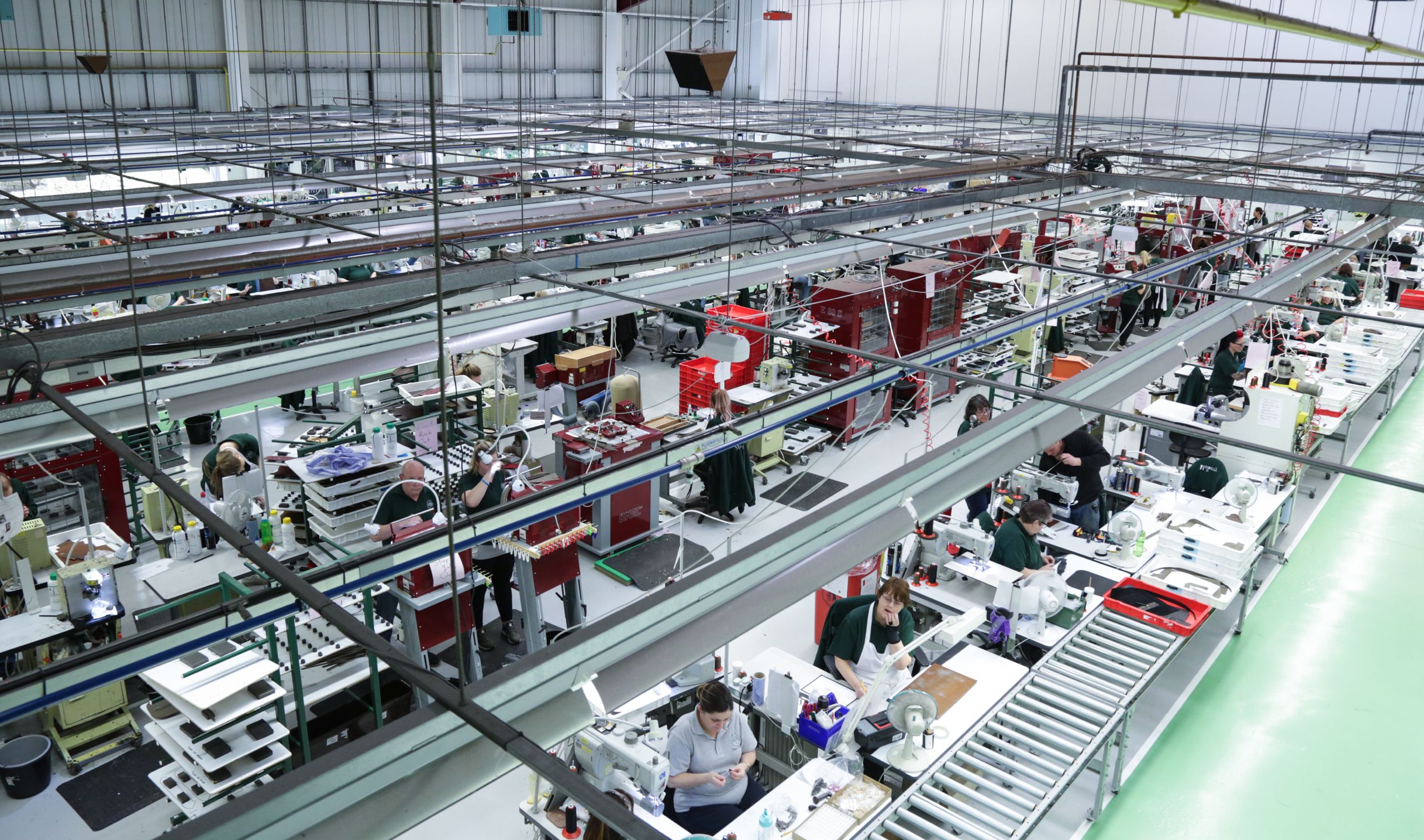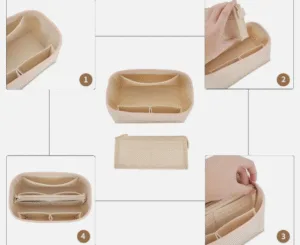As a leading British luxury leather goods brand, Mulberry has always been defined by its masterful craftsmanship, commitment to sustainability, and the quality of every bag manufactured in its Somerset factories. The brand’s handbags and accessories are produced across three key regions—the UK, Turkey, and China—each contributing distinct strengths to Mulberry’s portfolio: the UK preserves heritage leatherworking, Turkey specializes in men’s leather goods, and China delivers efficient small leather goods production.
This global strategy reflects Mulberry’s dedication to its “Made to Last” ethos—exemplified by carbon-neutral factories in the UK and rigorous quality control from Turkish partners—while balancing cost efficiency, market responsiveness, and environmental goals. In this article, we explore Mulberry’s production ecosystem across these regions, uncovering how the brand combines local craftsmanship, sustainable practices, and global collaboration to create luxury leather goods with a conscience.
Contents
The Global Production Footprint of Mulberry Bag
Mulberry makes its bags in three main areas: the United Kingdom, Turkey, and China. Each place has a special job. This setup helps Mulberry focus on skilled work, being eco-friendly, and meeting what customers want.
| Region | Details |
|---|---|
| United Kingdom |
> 50% of Mulberry bags are manufactured in the UK. Two carbon-neutral factories make the bags in the UK. 600 workers make about 2,800 bags each week. Shows British skills and long-term heritage. |
| Turkey |
Mulberry collaborates with three factories in Turkey. These factories make goods for other luxury brands like Dunhill and Givenchy. Primarily, they focus on men’s bags and leather products to meet global demand. |
| China |
Small leather goods are made in China. Ensures quality and meets different needs. |
These production choices connect to Mulberry’s Made to Last ideas. These ideas highlight being sustainable, open, and innovative. The brand commits to using leather from approved, eco-friendly sources. They also use ethical methods. Its aim is to achieve a carbon-neutral leather bag manufacturer by 2035.
United Kingdom (Somerset) Mulberry’s Bag Manufactured
It impressive that Mulberry makes over half of its leather bags right here in Somerset, England. This shows they care about keeping British skills alive and helping local people. They have two main places where they make the bags: The Rookery (Chilcompton) and The Willows (Bridgwater).
| Factory Name | Details |
|---|---|
| The Rookery (Chilcompton) |
The Rookery was Mulberry’s first factory. It’s a key place for developing new products. It houses skilled craftspeople and the Lifetime Service Centre. They also offer tours showing how things are made in the UK, which is great for transparency. Workers receive full training inside the bag factories. They learn skills like cutting leather, sewing, and checking quality. |
| The Willows (Bridgwater) |
Mulberry opened this factory in 2013. It cost £7.5 million, and that £2.5 million came from the UK government’s Regional Growth Fund. It has seven production lines. Around 250 people work there, which helps create local jobs. Their focus on sustainability. They use solar panels and recycle rainwater. They achieved Zero Waste to Landfill certification in 2020. Also, the factory has been carbon-neutral since 2019. |
Production and Sustainability

During visits to two Mulberry bag factories, it was striking to witness the production of over 1,600 bags each week — an impressive figure every time. Observing the craftsmanship behind their more complex bags proved especially fascinating. Some designs require up to 41 meticulous steps, demonstrating the depth of skill involved. One particular leather tote stood out — a beautifully crafted piece that took nearly seven hours to complete. Watching the precise stitching and cutting firsthand highlighted the patience and expertise embedded in each product.
Mulberry’s strong commitment to both customers and the planet is evident not only in their messaging but also in their actions. For instance, the team has taken significant steps toward sustainability by phasing out single-use plastics and transitioning to 100% recycling bags that can be collected from the kerbside. While sourcing sustainable materials without compromising on quality remains a major challenge — as seen in many small-scale attempts across the industry — Mulberry’s success on a much larger scale deserves admiration. In contrast, similar efforts by smaller operations have often struggled to meet quality expectations, particularly in packaging. Therefore, Mulberry’s achievements serve as both encouragement and inspiration for those seeking more responsible solutions.
What stands out most is how Mulberry’s values are embedded in their processes, not just in their words. Holding one of their bags conveys meaning beyond function — the weight, the finish, and the attention to detail reflect genuine care for people and the planet. Such dedication offers a powerful example, prompting reflection on how better decisions can be made when selecting materials or refining production methods. Continuous improvement is always possible, and Mulberry demonstrates what that can look like at a high standard.
Employment and Training

These bag factories play a vital role not only in producing high-quality goods but also in uplifting the communities around them. By creating hundreds of stable and meaningful jobs, they directly contribute to improving the local economy and fostering long-term growth. More importantly, they provide opportunities to individuals who are often overlooked in the job market. For example, people who have experienced long-term unemployment are actively recruited and supported. Single parents balancing family responsibilities are also welcomed, offering them a chance to rebuild their careers. In addition, older, experienced workers — particularly those over 50 — are valued for their craftsmanship and knowledge, at a time when many employers tend to overlook their contributions.
The Willows stands as a clear example of this inclusive and compassionate approach. Notably, around 20% of its new employees had been unemployed for more than six months prior to joining the team, a statistic that highlights the company’s dedication to second chances. For these individuals, gaining employment likely brought renewed confidence and stability, both financially and emotionally.
Moreover, Mulberry’s commitment goes beyond job creation; it includes comprehensive skill development. Through structured training programs, apprentices are given the tools and guidance to grow within the company. With the support provided, many have transitioned quickly into supervisory or leadership roles — a testament to both the effectiveness of the programs and the culture of internal growth. This emphasis on upskilling benefits not only individuals but also the broader workforce by raising the overall standard of craftsmanship and productivity.
What’s especially notable is how factories like The Willows and The Rookery represent more than just production sites. They embody Mulberry’s deeper values: a respect for heritage, a commitment to sustainability, and a genuine care for the people behind the products. These facilities serve as living proof that bag production can be both ethically responsible and economically impactful. In embracing community, tradition, and innovation simultaneously, Mulberry reinforces its position as a brand that stands for more than fashion — one that invests in people and believes in long-term, positive change.
Turkey (Izmir)

SF Leather is in Izmir, Turkey, within the Aegean Free Zone. It’s a very important part of how Mulberry makes its products. This site focuses on making luxury leather handbags and accessories. About 90% of what they make is for Mulberry. They are a major supplier for Mulberry. They produce about 8,000 Mulberry handbags each month.
SF Leather has 190 workers at its Izmir bag factories.
SF Trade runs the factory. This company started making luxury leather goods in 2009.
It’s good that the group focuses on quality and safety rules. They also focus on actions for bag sustainability. This helps make sure brands like Mulberry get top-quality products.
Even with the past problems, SF Leather is still an important partner for Mulberry. That Mulberry’s bag supplier lists for 2023 and 2024 still have SF Leather on them. This shows they still depend on the Izmir bag factories to make their luxury leather goods.
China

Mulberry makes some of its bags in China, relying on the country’s strong manufacturing skills. Key places for production include trusted bag suppliers known for efficiency and scale.
| Province | Details |
|---|---|
| Guangdong Province |
Produces about one-third of China’s bags. |
| Zhejiang Province |
Second-biggest production area. |
| Fujian Province |
Known for new ideas and good shipping systems. |
China plays a big part in the world’s bag industry. It makes up 50% of all cases and bags globally. Over 70% of these go to markets in Europe and North America. Bag and luggage exports are significant, making up about 20% of China’s total exports.
Cost Efficiency and Production Quality

Making goods in China helps Mulberry save money while using modern production methods. The costs in Chinese bag factories, where their bag factories operates, are typically split 50/50 between materials and labor—enabling cost-effective, large-scale production.
Mulberry also follows strict quality and ethical rules using its Global Sourcing Principles. This ensures good work quality and respects workers’ rights. It shows the brand’s dedication to making products responsibly and caring about sustainability.
Brand Strategy Adjustments
According to recent reports from market research firm Euromonitor International, Mulberry is using China less. This shift appears to be driven by a 27.9% drop in Asia-Pacific sales in late 2024 and issues with customer demand. The brand is now focusing more on the UK and US markets, cutting back its operations in China.
Even with this change, China is still important for Mulberry’s plans. The company benefited from efforts like a duty-free store in Hainan. Also, after COVID-19, China’s retail sector improved. This improvement helped the company increase its income in the past.
Summary
Mulberry’s worldwide production network—Britain’s heritage craftsmanship, Turkey’s expertise in men’s leather goods, and China’s efficient small leather goods manufacturing—demonstrates how luxury can harmonize traditional artistry with modern globalization. Each region contributes unique skills while upholding the brand’s “Made to Last” ethos: from carbon-neutral factories in Somerset to rigorous quality control in Turkey and agile production in China. Mulberry proves true luxury lies not just in the product, but in its respect for craft, community, and the planet.
What matters most to you in luxury? Timeless bag craftsmanship or sustainable practices? [Share your thoughts below], or explore Sunteam’s official site to discover more about their artisanal journey.







